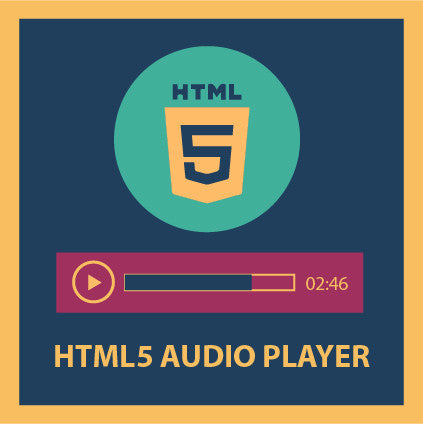

However, regardless of whether or not it's in the DOM itself, the element can be controlled via its API methods and properties. Note that this element will not be part of the page's DOM, unless we explicitly add it to the document with further scripting. In JavaScript we can invoke an Audio object, which returns an element. In this article I will only scratch the surface of this API, since we will be using a third party library to help us build our player, but it is still useful to know about. The element exposes a powerful JavaScript API. If you don't specify this, no controls are shown, and you need to create your own controls using the handy audio JavaScript API and HTML, CSS, and whatever other web standards you want to draw the controls with. Loop is a boolean attribute specifying whether the source file should start to play all over again when the end of the source file has been reached.Ĭontrols is a boolean attribute specifying whether or not the browser should display its default media controls or not. Find out more about the preload attribute. Available values are preload="none", preload="metadata" and preload="all". A mobile browser may decide to preload nothing, in order to conserve bandwidth, while a desktop browser on a fast connection might begin loading immediately.

Preload tells the browser to make an informed decision about how much data to download. If you need to use autoplay, make sure you always provide the user with the possibility to stop the playback. Autoplay will force audio to play without the interaction of the user and can interfere with other audio sources the user might be listening to. Note: bear in mind that autoplay is considered bad by many users. Note: to convert between Ogg and MP3 formats, there are a variety of free applications available, such as Free Rip for Windows, and Audio MP3 converter for Mac.Īutoplay is a boolean attribute specifying whether the source file should start to play automatically at page load or not. As you'll see later, different browsers support different formats, so ideally you should provide something that any browser can play. This is useful because you can use multiple elements to point to different audio formats. The src attribute can also be replaced with one or more nested elements like this: Src contains the path to the audio file you want to play. The browser will then provide a simple player element in the web page.įigure 1: a basic element rendered in Opera.

To play an Ogg Vorbis file you can simply write: In this article we will look at the element, starting with the basics, looking in detail at how it works across different browsers, and then build a radio player application that uses live audio from a streaming server. It is nice not having to go back into Flash every time you want to make some changes to the audio content. It plays nicely with other open standards - you can create custom buttons using CSS and HTML, and give them appropriate functionality using the HTML5 audio API. For many years, Flash was the only way to provide audio in any kind of interactive way – but with the introduction of the element in HTML5, audio playback can now be done natively. Previous to HTML5 coming on the scene, it was a fairly awkward task to add audio to web pages.


 0 kommentar(er)
0 kommentar(er)
